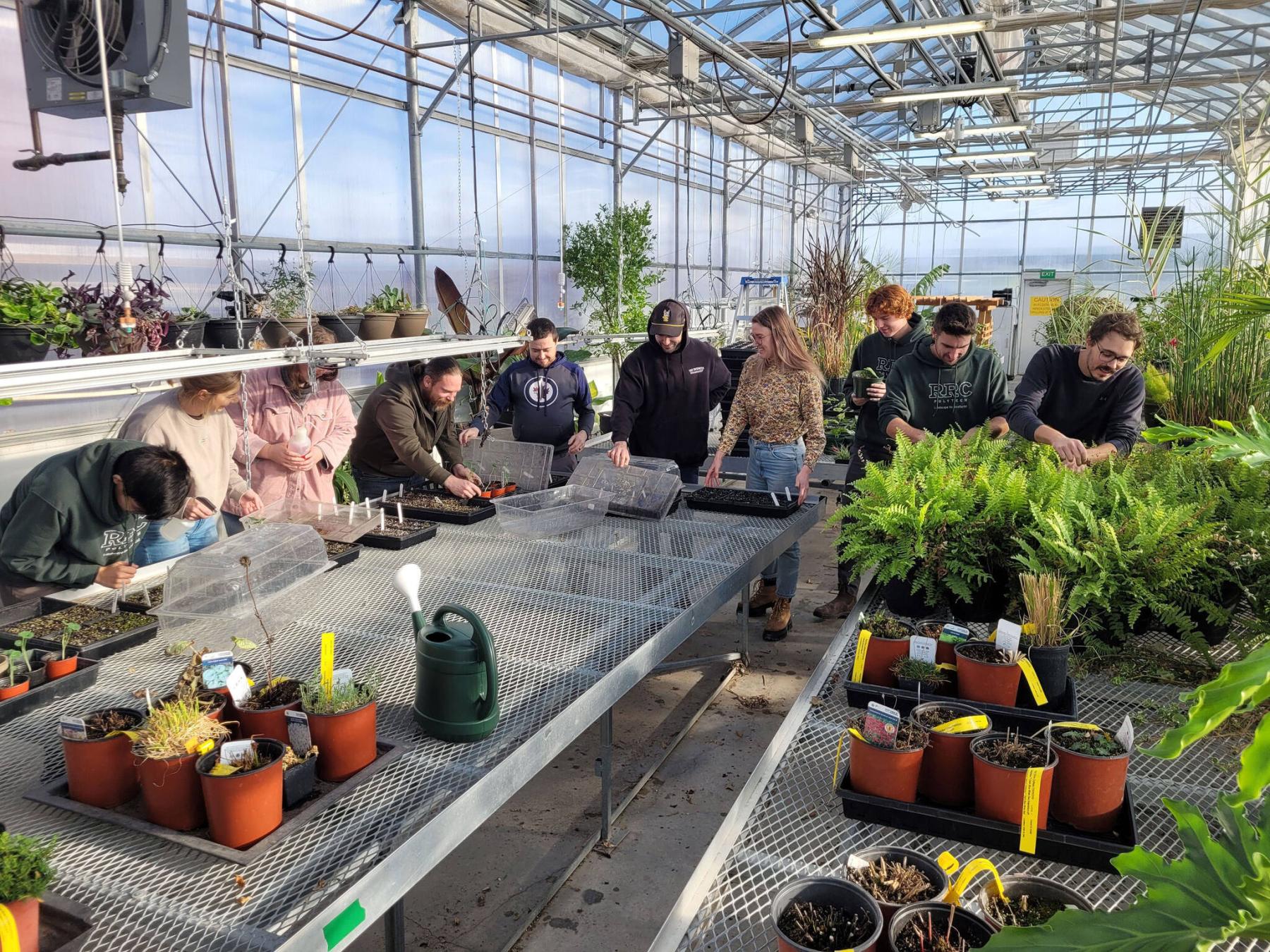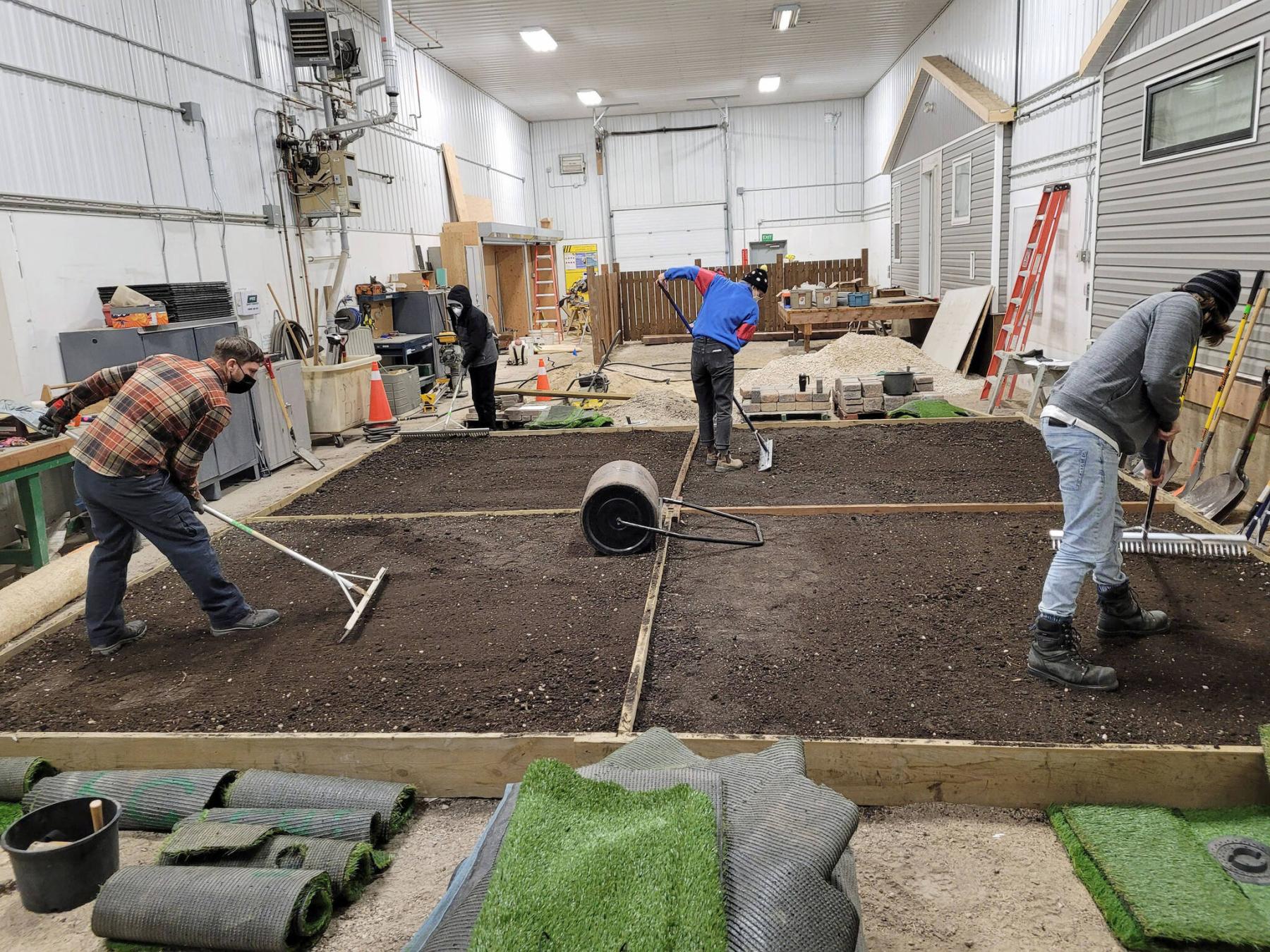
Guy Dowhy photo
Students in Apprenticeship Manitoba’s landscape horticulturist program design and build projects in a workshop at RRC Polytech.
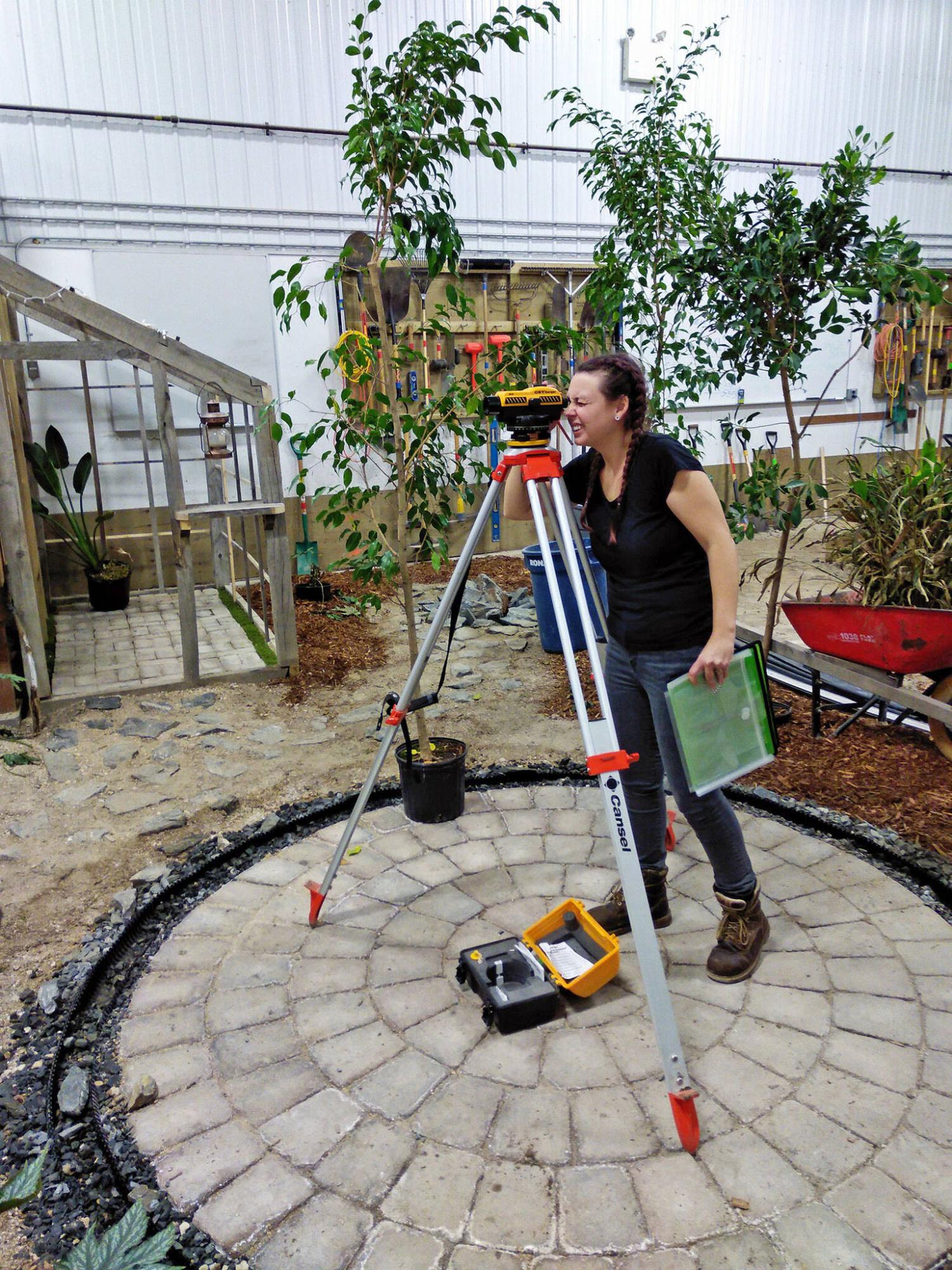
Guy Dowhy photo
Science-based learning contributes to growing a skilled workforce in the landscape trade.

LiveRoof photo
Green-roof modules are planted with drought-tolerant sedum.
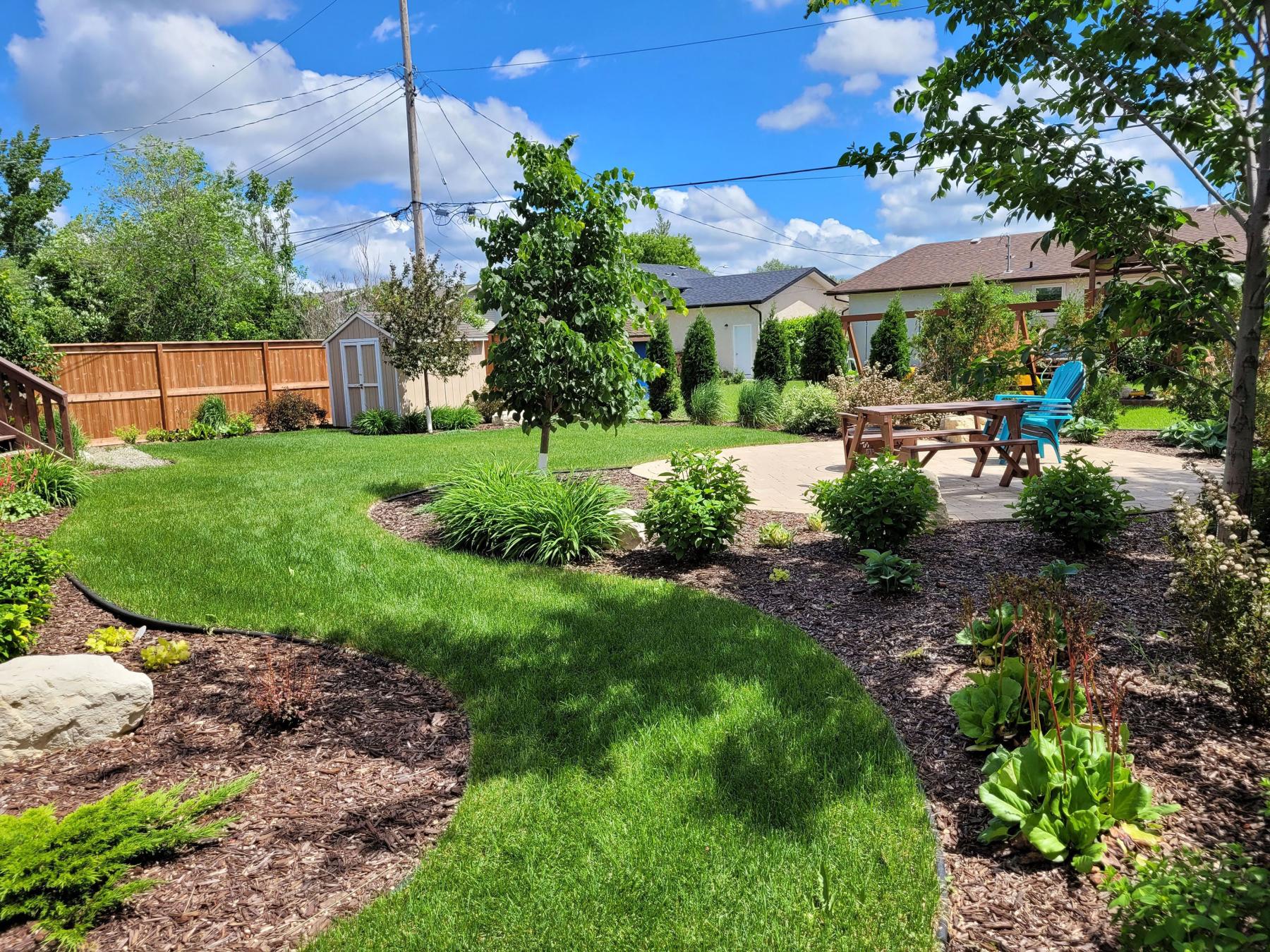
Dowhy Design & Landscapes photo
A functional landscape design can help increase a homeowner’s investment.
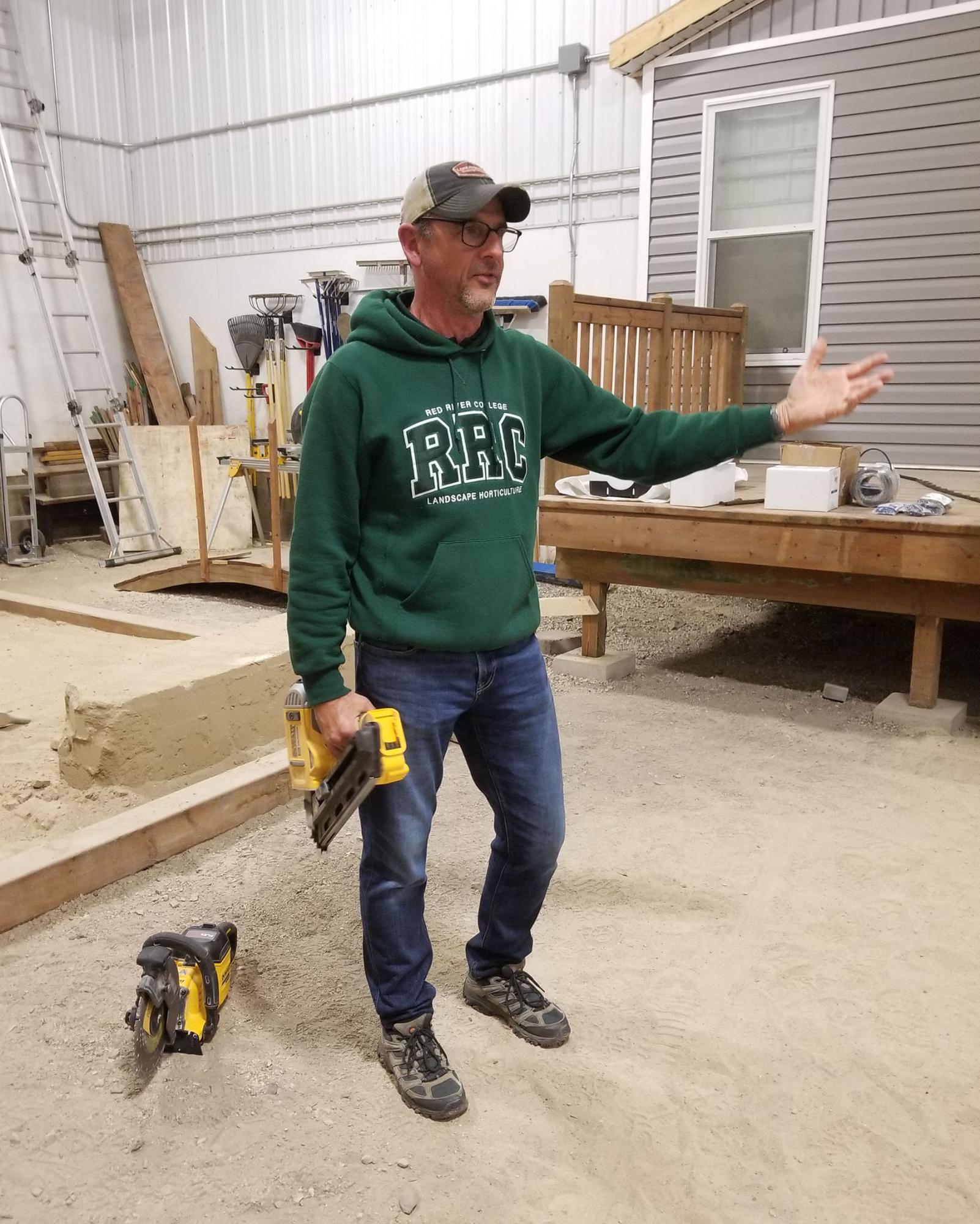
Colleen Zacharias / Free Press
Instructor Guy Dowhy sees great value in the landscape horticulturist program.
What does a landscape horticulturist do?
The common response might be that a landscape horticulturist is someone who works outdoors and cares for or designs residential landscapes. That’s an important part of what such a professional does, but it only scratches the surface.
In addition to designing, constructing, installing and maintaining landscapes for residential clients, landscape horticulturists also create beautiful, functional landscapes for public gardens and parks. They also work at retail garden centres, commercial greenhouses and golf courses. Through their practical skills and science-based knowledge, landscape horticulturists also play an essential role in mitigating the impacts of climate change.
In Manitoba, one of the paths to acquiring these skills is the landscape horticulturist apprenticeship program at Red River College Polytechnic. While the program is taught there, it is not actually an RRC Polytech program. Registration is only accessible through Apprenticeship Manitoba (gov.mb.ca/aesi/apprenticeship/index.html). Applications are now being accepted for Level 1 of the program, which begins in January.
Guy Dowhy is passionate about the apprenticeship program. Dowhy is a Red Seal-endorsed landscape horticulturist and a certified landscape horticulturist manager and technician. He has a degree in botany and owns his own landscape design firm — Dowhy Design & Landscapes, a CNLA-Accredited landscape horticulture company.
Those are a lot of credentials. Dowhy — a teacher in the landscape horticulturist program at RRC Polytech who was named 2023 Instructor of the Year by Apprenticeship Manitoba — says the credentials really do mean a lot. “They are a differentiator,” says Dowhy. “We strive to be a cutting-edge training program that teaches the most current techniques and skills. When registrants leave the program, they have more of the background knowledge that’s going to be required for a successful landscape.”
A successful landscape is one designed with the environment in mind.
“We know that urban infrastructures are overloaded,” says Dowhy. “We have this history of draining all the runoff from our properties straight to the street and we know our infrastructure can’t handle that. If you can harvest the water and use it to water your plants, that is much better than allowing it to run off, collecting pollutants, effluents and often nutrients that leach away and go straight into our lakes and streams.”
Students in the landscape horticulturist program have the benefit of a green-infrastructure curriculum, says Dowhy who has taught the program for 25 years. “Weather influences everything landscapers do. As we see more extreme weather, proper grading becomes more important. The landscape horticulture program teaches what is known in engineering as low-impact development which is the management of stormwater on site to minimize its impact on urban infrastructure.”
There is more demand than ever for knowledge about sustainable practices: water harvesting, low-volume drip irrigation systems, erosion control, permeable paving, xeriscaping, water-efficient fusion gardening, green roofs, green walls, rain drains, rain swales, fire-smart landscape design and science-based knowledge of flora so plants survive and thrive for decades to come.
“The thing with apprenticeship that is often misunderstood,” says Dowhy, “is that applicants to the program must be employed by an employer who supports the landscape horticulturist program. You can’t join the program unless you are already employed in the trade.”
In November I attended the landscape open house at RRC Polytech hosted by the Manitoba Nursery Landscape Association. It was an opportunity to learn about the course, meet some of the students and get a firsthand look at the impressive facilities. It was an eye-opener.
In addition to learning about the courses offered in four levels over a 35-week period, there was an opportunity to tour the greenhouses and spacious indoor workshop area where students learn hands-on techniques including the construction of fences, decks and steps, as well as masonry and precast-concrete installations.
The large, fully equipped indoor workshop includes areas where students learn how to plant trees and shrubs into soil. Then the plants are removed and next thing, they are laying sod. The workshop is an ever-evolving, ever-revolving hands-on experience.
“Everything comes off and students move onto the next project whether it is timber retaining walls, brick retaining walls or installing water-collection systems,” says Dowhy.
On my visit, students had just finished designing and creating a beautiful, tiered water feature complete with low-voltage lighting, but now they are preparing to build a green roof. A palette of modules filled with engineered soil and hardy, drought-tolerant sedums are arriving from LiveRoof, an innovative Alberta-based company. “We are going to transform one of the decks we built into a green roof.”
Other trades — carpentry and roofing — will also participate. The finished project — a shed with a green roof — will be auctioned for sale.
All four levels of the program are taught during the winter months. “This is one of the few programs in Canada where students can gain hands-on experience during the winter, thanks to the shop facility we are able to use at RRC Polytech.” Dowhy says there is incredible support from suppliers in the local green industry who provide tools and equipment.
There are also two greenhouses onsite. One is a conventional greenhouse similar to those at retail greenhouse operations, but there is also a passive solar greenhouse which includes multiple green-wall systems which are becoming increasingly popular in offices and schools.
In November, more than 200 plants, including trees, shrubs, perennials and houseplants, arrived at the greenhouse. “The plants are getting ready to bud and will be fully leafed out in January so students can identify them,” says Dowhy. Students will learn about the different purposes of plants and how to place them attractively in the landscape, how to identify plant diseases and pest infestations, as well as how to manage maladies and pests. They will also learn about the many different ways to propagate plants as well as grafting and budding.
People are passionate about their plants, says Dowhy. “Landscape horticulture is the only designated trade that has to keep something alive. So, we have a very unique skill set because we are dealing in science, soils, water and plants.”
Why would an employer want their staff member to enrol in this program? “Because we’re going to make those employees more knowledgeable,” says Dowhy, “so they understand more of the background of why they are doing something which helps them to have a better interaction with clients. We teach registrants the proper industry best practices so they know how to do things safely and how to do them right the first time. And when we do it right, we increase the value of the homeowner’s investment.”
The science-based knowledge landscape horticulturists take on can make a significant difference to the environment. “But what our industry is actually selling is an esthetic,” says Dowhy. “A lot of the extra revenue generated in our industry comes from the desire by homeowners who just want to make their yard look really nice. But those esthetics increase a yard’s property value and mean that people spend more time enjoying their yard.”
And who can’t afford to do it right the first time?
For ideas and tips to keep your outdoor and indoor plants growing, sign up to receive Winnipeg Gardener, a free monthly newsletter I write for the Free Press. You can find the latest edition and sign up to receive the newsletter at winnipegfreepress.com/newsletter/winnipeg-gardener
colleenizacharias@gmail.com

